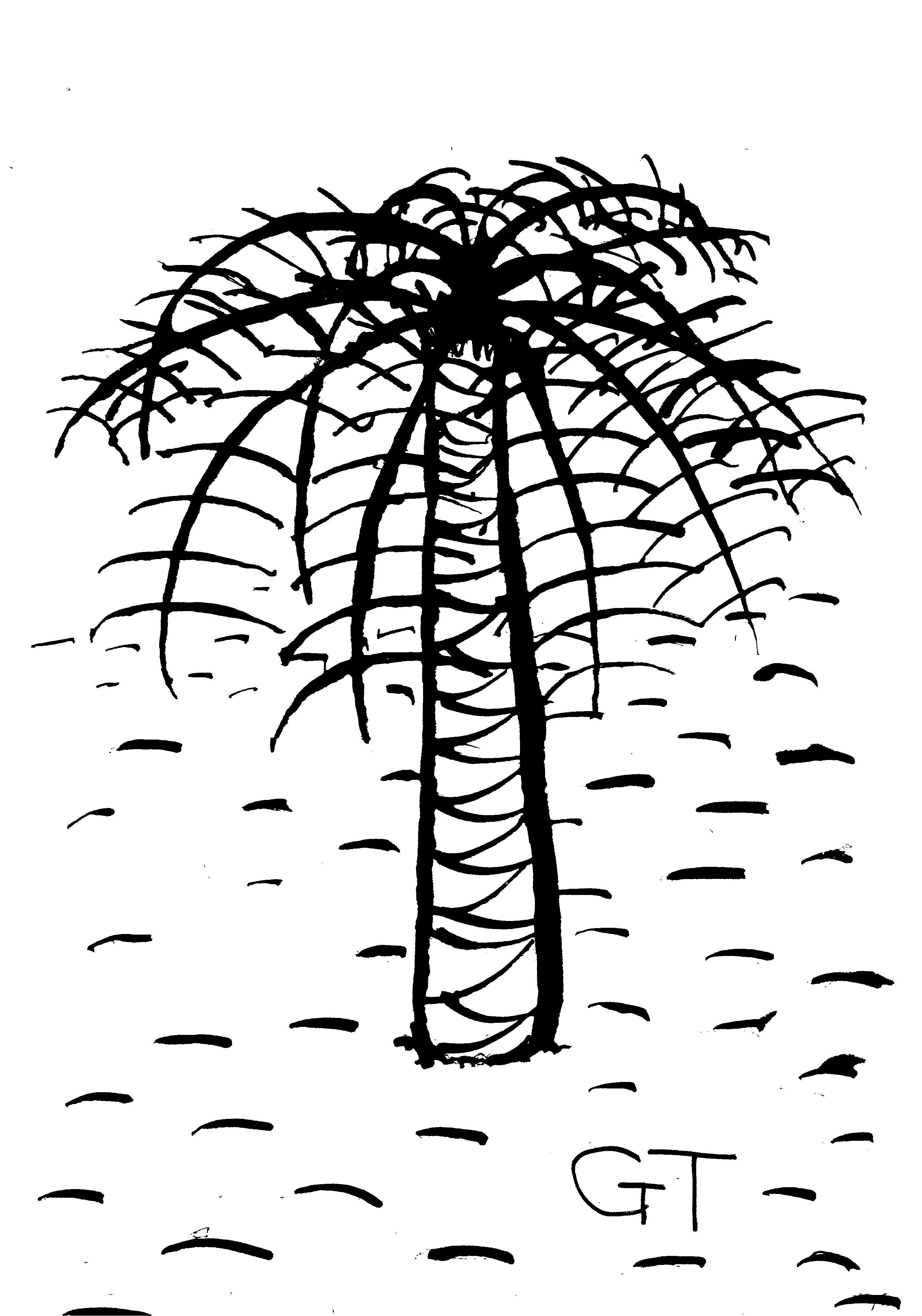Imagine New Brunswick 350 million years ago, when it was situated ten degrees from the equator— a hot and humid coastal climate with rainforests, lakes, and swamps. Trees and plants during this time looked like giant horsetail weeds, palm trees, or bamboo from an alien planet. Matt Stimson, a local paleontologist behind a new tree fossil discovery, describes the plants of the carboniferous period as looking like “something out of a Dr. Seuss book.” The newly discovered species is no different, demonstrating characteristics unlike any tree seen on Earth today. It is one of very few tree species identified in such good condition from this period, making this finding all the more exciting.
A mysterious large stone was identified in a quarry in Norton, New Brunswick seven years ago. Matt Stimson was conducting fieldwork with a Saint Mary’s University graduate student, Olivia King back in the summer of 2017. Upon external investigation, the two had recognized that there was likely a fossil hidden on the inside worth excavating for. In February of 2023, the fossil was revealed to be a well-preserved three-dimensional impression of a tree species. However, this plant was unlike the other common species observed throughout New Brunswick’s many Carboniferous fossils. Stimson describes the tree as having a 16-centimeter soft trunk standing three meters tall, and a “bottle brush” canopy of around 250 leaves, each about 1.75 meters in length. He states in an interview with CTV News that the dense leaves “come directly off the stem and are in a spiral pattern coming out horizontally from the tree.” It was concluded to be an entirely new and previously undiscovered species. The now extinct tree is officially named the Sanfordiacaulis densifolia, after the quarry in which it was found. Such a discovery was not to be taken lightly, as perfection in fossilization to this degree is rarely found in findings of any geological period.
The Carboniferous period occurred during one of New Brunswick’s most tranquil eras in terms of continental movement. Approximately 350 million years ago, the Earth’s atmosphere was rich with oxygen, providing a well-established environment for land animals and plant life that existed long before the dinosaurs. Terrestrial critters were limited to the first diversified amphibians, the first amniotes which had eventually evolved to modern-day mammals, and ginormous bugs. Dragonflies with 2.5-foot wingspans, and 2.5-meter-long millipedes dominated the skies and the land. In addition to the massive tree ferns and club mosses, large trees such as the Lepidodendron, Calamites, and Chordates are among some of the most frequent species existing during this period in the province. A special quality of this time is the prominent coal deposits left behind by the dense organic matter that had fossilized, hence the name “Carboniferous.” A lot of the time, well preserved fossils are difficult to find, as preservation depends on the time and amount of sediment deposition over a fallen tree. Weathering of sediment and remaining carbon film can affect the conservation and visibility of the fossil. The newly discovered Sanfordiacaulis fossil is beyond thrilling to see for the scientific community. In this case, evidence proposes that the tree fell to the bottom of a large lake during an earthquake, bringing about its 3D structure, pristinely kept under layers of solidified mud for millions of years.

The discovery has gained worldwide attention since its publication. New findings such as this will be crucial to the scientific community in the future. Conclusively, the more revealing fossils we uncover, the better our understanding will be of the planet’s environmental and geological history. To learn more about the fossils of the Carboniferous period, take a trip to Fundy’s Cape Enrage and Joggins Fossil Cliffs.





